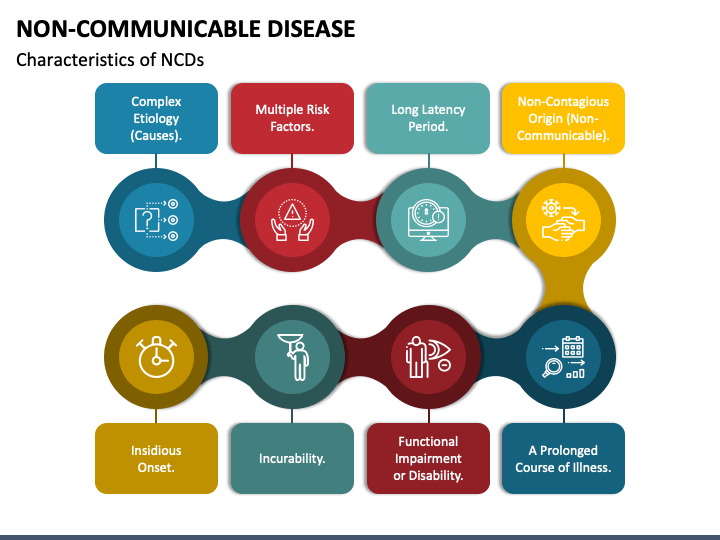The
initial cause of the diseased state may lie within the individual organism
itself, and the disease is then said to be idiopathic, innate, primary, or “essential.”
It may result from a course of medical treatment, either as an unavoidable side
effect or because the treatment itself was ill-advised; in either case, the
disease is classed as iatrogenic. Finally, the disease may
be caused by some agent external to the organism, such as a chemical that is a
toxic agent. In this case, the disease is noncommunicable; it
affects only the individual organism exposed to it. The external agent may be
itself a living organism capable of multiplying within the host and
subsequently infecting other organisms; in this case, the disease is said to be
communicable.
Noncommunicable disease
Noncommunicable diseases, also known
as chronic diseases, are generally long-lasting and progress slowly, and thus
they are sometimes also referred to as chronic diseases. They can arise from
environmental exposures or genetically determined abnormalities, which may be evident at birth or become apparent later in life. The World Health
Organization (WHO)
has identified four major types of noncommunicable disease: cancer, cardiovascular disease (e.g., heart attack, stroke), chronic respiratory disease (e.g., asthma), and diabetes mellitus. WHO estimates that these
four groups of conditions account for 82 percent of all deaths from
noncommunicable diseases.
Noncommunicable diseases that arise
from inherited genetic abnormalities often leave an individual ill-equipped to
survive without some form of treatment. Examples of inherited diseases include cystic fibrosis, Down syndrome, and inborn errors of
metabolism, which
are present at birth. Examples of inherited diseases that emerge in adulthood
include Huntington's disease and certain forms of cancer (e.g., familial breast cancer involving inherited mutations in either of the genes BRCA1 or BRCA2).
In Zambia, the most common NCDs in
the country include chronic respiratory diseases, diabetes mellitus (type II),
cancers, epilepsy, mental illnesses, oral diseases, eye diseases and sickle
cell anaemia.
·
Recent research has shown that 24 percent of men smoke and more than a third of
men had hypertension.
·
In
the recent past several people have had suffered attacks from some of non-communicable diseases while at their workplaces.
·
With
the change of life style and the adoption of bad eating habits a large number
of people in society have been affected with diseases like hypertension,
diabetic and many others.
Communicable Diseases in Zambia
Communicable diseases, also known as infectious
diseases, along with maternal, perinatal and nutritional conditions in
Zambia account for an estimated 64% of all mortality in 2008.
·
The prevalence of HIV in Zambia, as a
percentage of population aged 15-49 years, stood at 12.7% in 2012. There has
been a gradual and continuous decline in the prevalence of HIV since 1993.
·
There were 2,976,395 reported cases of
malaria in 2009. The number of deaths from malaria have fallen by around
one-third between 2001-11.
·
In the period 1996-2012 there was a
reduction of over a third in the estimated incidence of tuberculosis (TB).
·
In 2009 there were 4,702 reported cases of
cholera, 681 reported cases of pertussis (whooping cough) and
·
371 reported cases of leprosy.











0 Comments